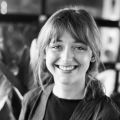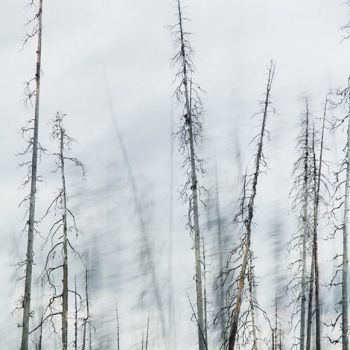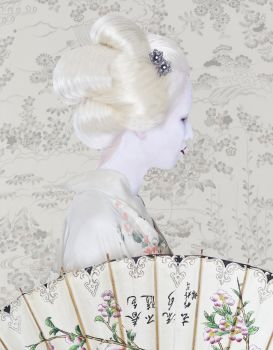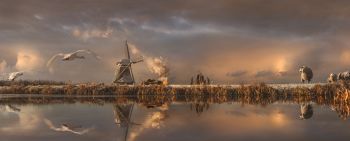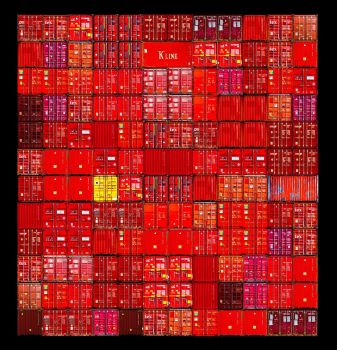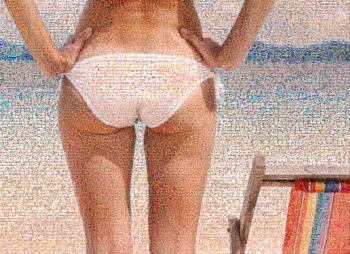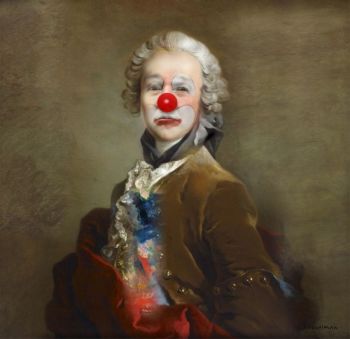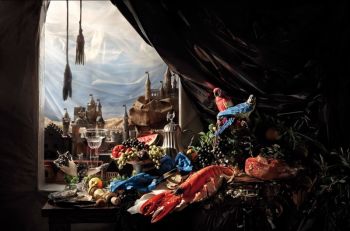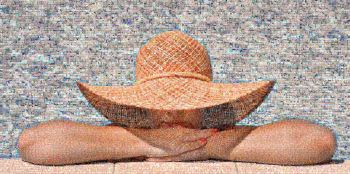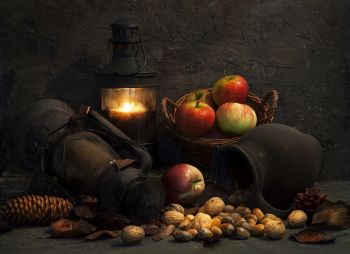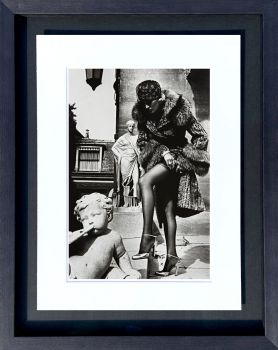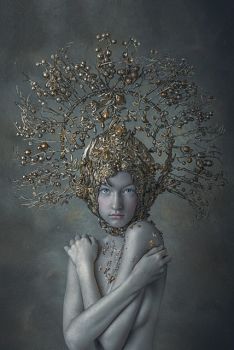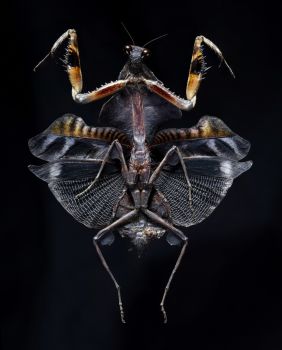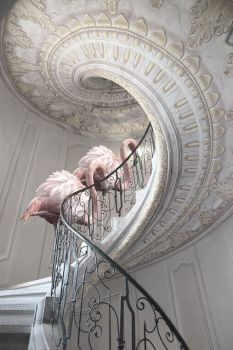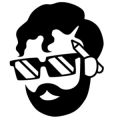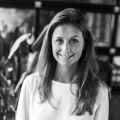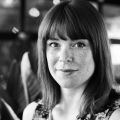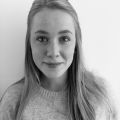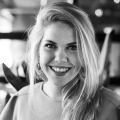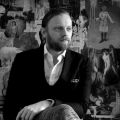The Man Behind the Camera: Dik Nicolai - Part I
Fashion designers, advertising agencies, private collectors… Everybody seems to be spellbound by the productions of Dutch photographer Dik Nicolai (1975).
On top of his already busy schedule (lots ideas and upcoming projects whilst raising two young boys), Nicolai’s work is showed at Masterly, The Dutch in Milano , Art Breda and KunstRAI: the ultimate confirmation of his photographic skills, the art form he feels most passionately and strongly about.
Nicolai's photographs require little or no explanation to be appreciated. Just a glance at any one of the intriguing portraits or unique and detailed depictions of still life arrangements on his website will leave a visitor curious for more. The brains, eyes and spirit behind this camera compose a man that everyone should meet at least once in their lifetime… Read on as we try to grasp the essence of the Dutch photographer: Part I!
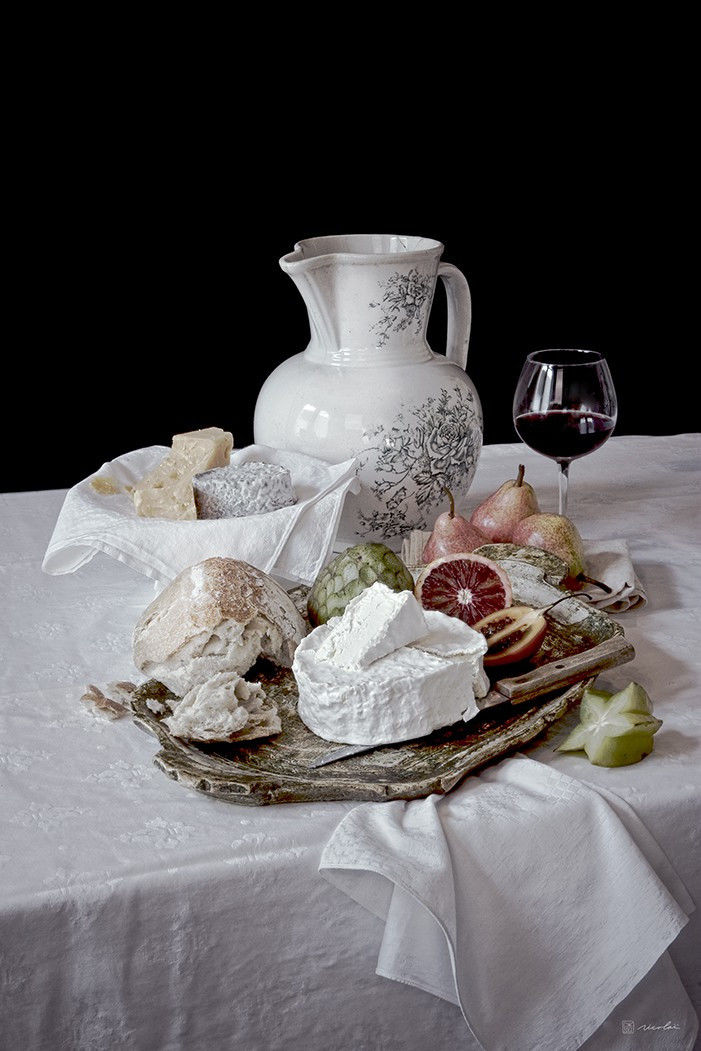
'Sunday Afternoon', Dik Nicolai, 2011 (Edition of 10 - 8 left).
As Nicolai tells us about his past, it becomes clear that we are dealing with a very original mind. "When I was around the age of 5, I could often be found armed with a bucket and a shovel, searching the familiar Dutch fields around my house. I was thrilled when I stumbled upon fragments of tiles and pottery, or left-behind broken tobacco pipes. Of course it was never about big archaeological finds: even the smallest and most insignificant objects sparked my imagination.
I loved to fantasize about these objects: a farmer throwing away his broken tobacco pipe alongside the road, left behind only for me to find it a hundred years later… I learned to understand that every object carries a message, a sense of history, a backstory... No matter how small or meaningless it might seem. You could say that the tendency to trace back the origin and the source of things is deeply embedded within my character.
The true meaning of an object goes even further than that: one thing I believe strongly is that everything you experience causes impulses and triggers inside your mind as well. Something is never just an object, that’s a superficial way of looking at things. I rediscovered my particular love for archaeology when I spent a year in Spain in 2002, searching for bottles and ceramic pieces to take photographs of.
You can still see it in my still life works: the process of how seemingly meaningless things can trigger something inside a person just by focusing on it."
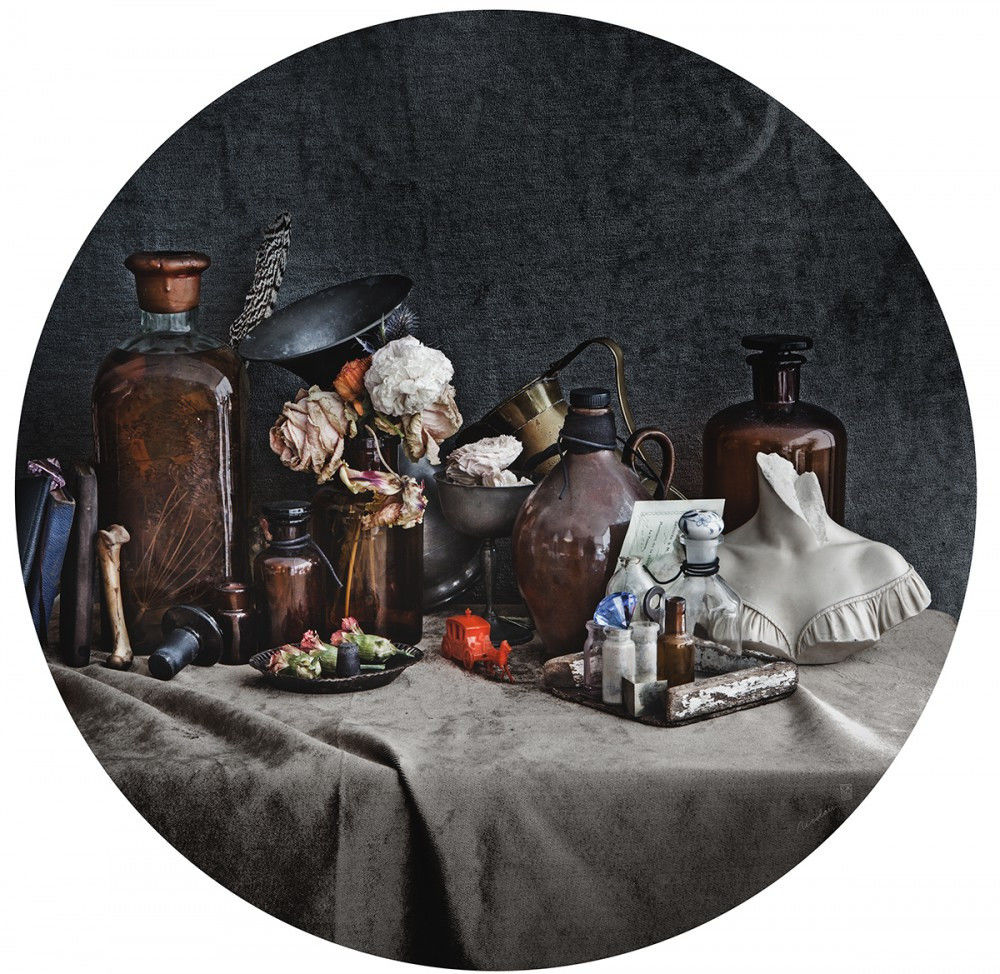
A fascination with archaeological finds and antiques is evidently present in this work;
‘Plastic but Royal’, Dik Nicolai, 2016 (Edition of 7).
Nicolai continues: "My mother was a seamstress. I have vivid memories of me sitting beside her on the ground when she was working on her fabrics. While she was sewing, I was drawing, in a kind of shared creative atmosphere. We all know that when you are dedicated to practicing a skill, you can become surprisingly good at it. And indeed: as I got better at drawing, the more I enjoyed it.
This is, aside from my natural tendency to focus on the background and the meaning of objects, what caused me to identify with the artistic process and the arts in general."
Many parents don't consider art school a "career-wise" option and this was no different in the Nicolai household.
However, Nicolai did apply to the Artes art academy in Kampen, but not to study fine arts: in stead he chose architecture and design: "I was and still am passionate about design. By choosing this direction I felt like I hadn’t given aesthetics a complete cold shoulder. Looking back, I regard this period in my life as a process of trial-and-error, ever changing focus and involvement in different aspects of architecture. As the years went by however, I found myself less fond of making the obligatory mathematical architectural drawings. I began experimenting by putting cardboard pieces left over from other students’ models together. My teachers must have sensed my need for creative development, because I was advised to redirect my studies to a more sculptural branch."
Perhaps this "unleashing" caused a small sense of freedom within … "I decided not to continue my education. I just felt a need to fly even higher. I had all sorts of different day-jobs at the time, such as working in a concrete factory. This so-called mindless work allowed me to clear my head so that I could lose myself in the arts at night. My apartment was entirely covered with paint, scraps and papers. Really, a mess! These ‘creative explosions’ all happened during the beginning of the digital age, I simultaneously developed a natural interest in the psychology and influence of the internet and websites as well: I was intrigued by the human process of action and reaction. I applied for a job as a web-designer and photographer for a small company in The Hague. Getting this job meant taking my first steps into the beautiful field of photography."
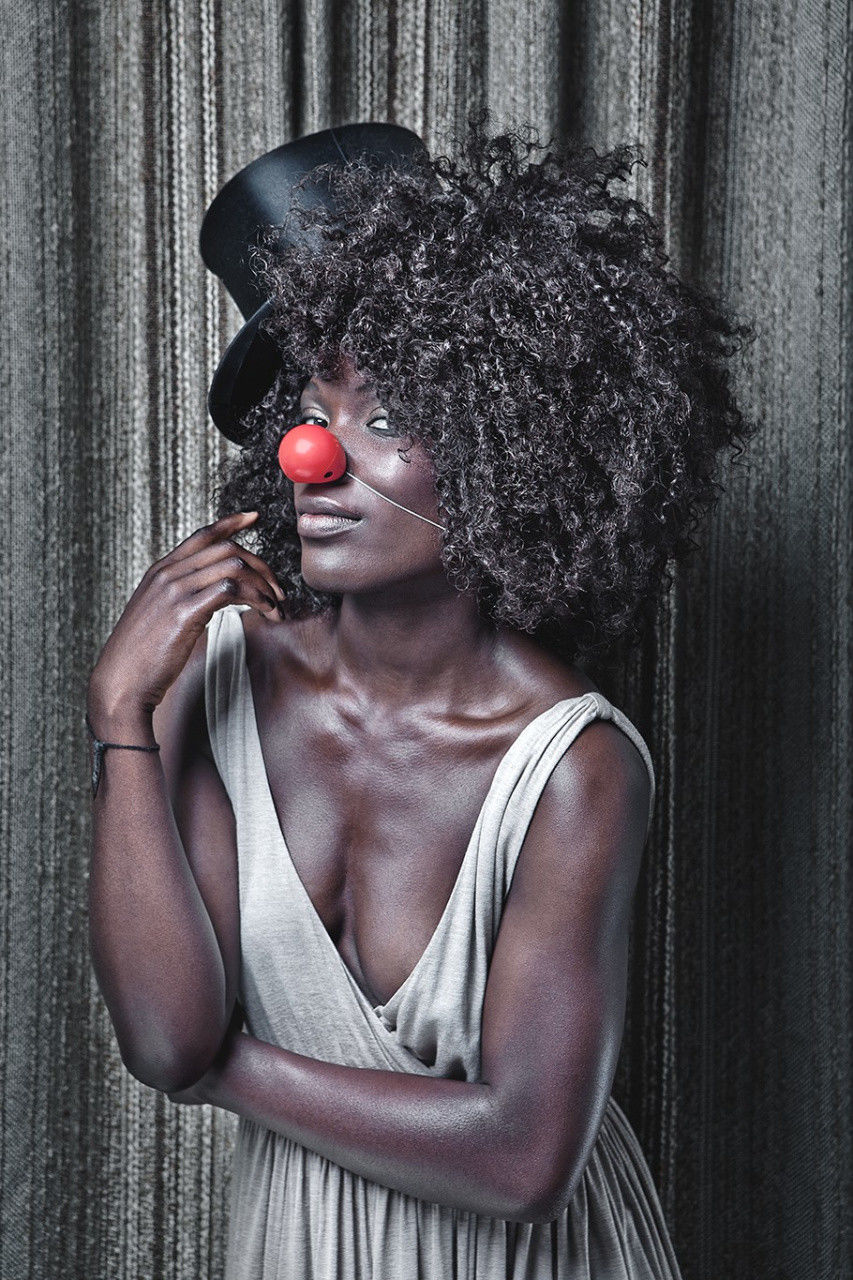
A commercial portrait example;
'Clown', Dik Nicolai, 2012.
Nicolai obviously found himself in expressing his philosophy and exploring nature through photography. His inspiration comes not just from big names such as Leibovitz, Corbijn, Avedon and Crewdson, but also from the Dutch Golden Age in general. Nicolai also strongly recommends the book 'Peinture Chinoise', for anyone interested in Chinese art.
Of course his own mind still plays the biggest part in the creative process which he speaks passionately about: "Coincidentally I celebrated my ten year anniversary of being an independent photographer last week. At the moment, I divide my artistic production between commercial work and personal projects. Commercial shoots are often portraits. An example of a shoot I’m currently working on? It's a project for a popular European retail chain. The idea was to approach different kinds of people shopping and to just ask them kindly if they were willing to be photographed. I
have to work hard to play their minds and make them feel at ease again after this, but by doing so, most people comply. After this, it's important that people keep feeling comfortable. When people are being photographed, they have a natural tendency to pose; to fake a smile. I have experienced that when I manage to get people to let go of this, I achieve the best results. The photographs begin to tell a story and to capture the essence of a person. It’s more raw. It’s natural. It’s beautiful and I don’t strive for anything less.
Nicolai continues about his fascination for portraits… "Everyone has got something to say. I love working with people, and again: the most beautiful things happen when they are at ease. In the beginning I wanted so badly for a model to enjoy the shoot and because of this, I was exhausted at the end of the day! I tried everything to achieve a positive, upbeat energy in order to make the shoot an enjoyable one. I still want people to feel as good as I wanted them to feel then, but my approach has changed: I let things flow naturally. I find that if I let my own personality take the stage in a shoot as well, a model often feels safe enough to open up. This is quite an enjoyable way of working: it’s clear, it’s free and there’s room for creativity."
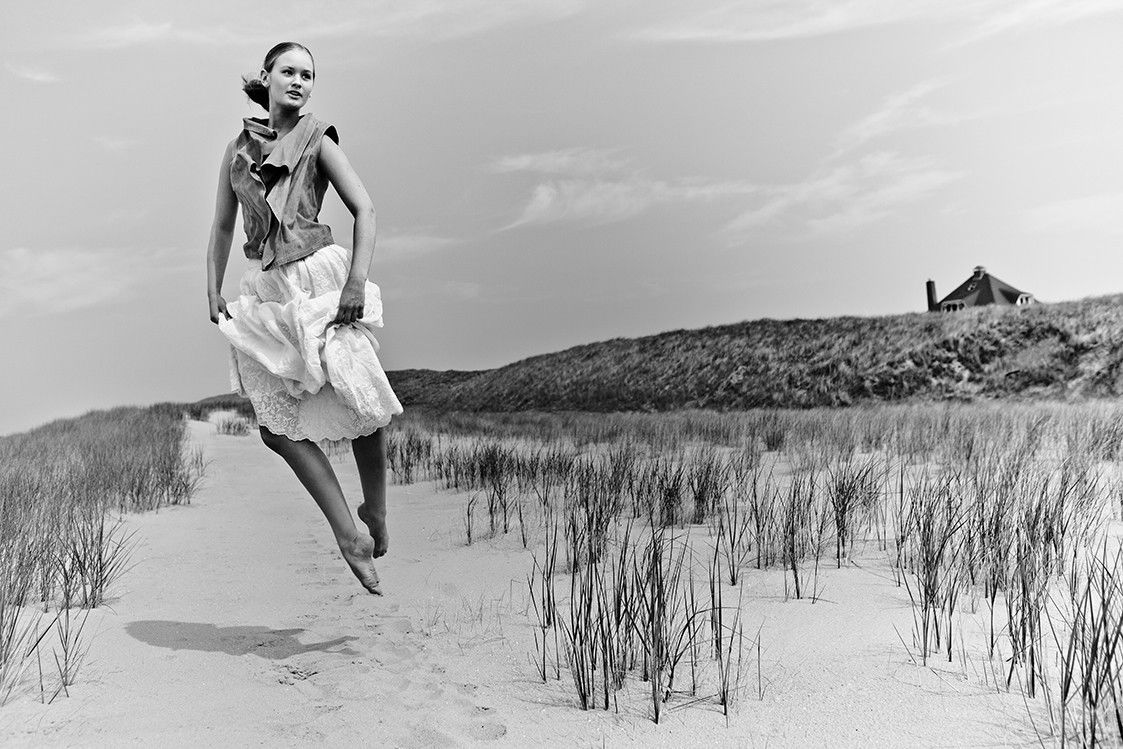
'Dutch Dunes', Dik Nicolai, 2012 (Edition of 10)
In part two, the famous photographer will open up about his characteristic way of composing still lifes and his opinion about the general position of art...
See for more photography of Dik Nicolai at Gallerease
Or read more about Dik Nicolai in Part II

